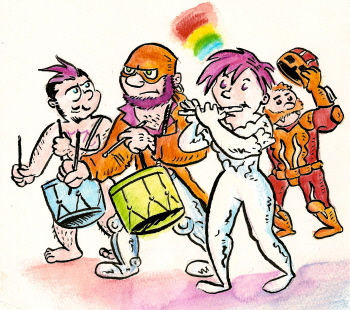Carnival is a festive season which occurs immediately before Lent. Carnival typically involves a public celebration or parade combining some elements of a circus, masque and public street party. People often dress up or masquerade during the celebrations, which mark an overturning of daily life. The most important celebrations are generally concentrated during the last days of the season before Ash Wednesday.
While the starting day of Carnival varies, the festival usually builds up to a crescendo in the week before lent, ending on Mardi Gras (Fat Tuesday), before Ash Wednesday, the beginning of Lent.

History
Hundreds of years ago, the followers of the Catholic religion in Italy started the tradition of holding a wild costume festival right before the first day of Lent. Because Catholics are not supposed to eat meat during Lent, they called their festival, Carne Vale — which means “to put away the meat.” As time passed, carnivals in Italy became quite famous; and in fact the practice spread to France, Spain, and all the Catholic countries in Europe. Then as the French, Spanish, and Portuguese began to take control of the Americas and other parts of the world, they brought with them their tradition of celebrating carnival.
The Carnival then was transported to the Caribbean by the European slave traders. They excluded the African slaves from the festival and had lavish masquerade balls. On emancipation the freed African slaves of the Caribbean transformed the European festival forever into a celebration of the end of slavery. The Carnival festival had a new cultural form derived from their own African heritage and the new Creole artistic cultures developed in the Caribbean. It is the Caribbean Carnival that is exported to large cities all over the world.



